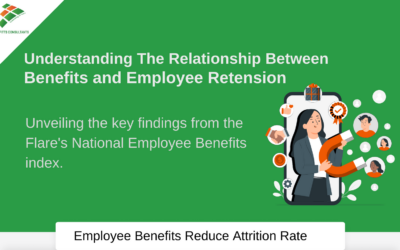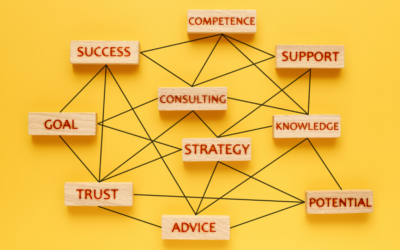Contents
Executives form a critical part of any business network. Often, organisations spend months working alongside specialist recruitment agencies to find the leader that suits their specific needs and aspirations. However, it is important to remember that the hiring process does not end when someone accepts an offer.
The price of failing to properly onboard a high-level staff member is significant. In fact, executive failures can cost up to 40 times their basic salary, and around 40% of C-level employees fail within the first 18 months.
Though there are numerous factors that can impact a hire’s longevity within their new role, robust onboarding consistently improves the odds of success. Preparing your execs to submerse themselves into your company culture and processes ensures that they are ready to help you achieve your goals. The question is, is there a “right way” to onboard your new leader?
What are the Benefits of a Thorough Onboarding Process?
Executive leaders are the people on your team that guide progress for your brand. They inspire other employees, motivate them towards success and empower their organizations to accomplish crucial goals. As such, these hires must know as much as possible about their new roles.

Ignoring onboarding requirements for senior team members means gambling your business culture, governance, and reputation. Without proper guidance, executives need to guess at the cultural, social, and professional components of their new position – areas that aren’t often covered by a job description. This means you are opening the door to many of the reasons that new leaders often fail, including:
- Inability to establish a cultural fit
- Lack of cooperation with peers and staff
- Lack of clarity about expectations
Research consistently shows that executive onboarding limits the need for costly replacements and terminations in high-end employment. It helps newly-placed leaders to assimilate into the organisation seamlessly, and even boosts the business bottom line. Companies with effective onboarding can see 1.9 times larger profit margins, and 2.5 times greater growth according to The Boston Consulting Group.
What Does Onboarding Need to Include?
Onboarding is the first step to empowering a high-performing team. To create an effective strategy, each company must get to know their senior staff, and what they expect to gain from their new role. An initial integration interview can be an essential way to plan an introduction, and answer the following questions:
- What does success look like for your brand?
- What goals have you set for your new executive in the first 30, 60, or 90 days?
- What tasks will your hire be expected to carry out, and how far does their leadership extend? Do they have the power to hire/fire people?
- What are the most critical elements of your company culture? How do you expect your executive to interact with others?
- Which problems does your new employee need to address straight away?
- How often will you conduct check-ins and review meetings?
An effective onboarding process is a crucial way to eliminate confusion about the expectations of a role. To help your executive to hit the ground running, make sure you:
1. Tailor Processes to the Role in Question

There’s more than one type of executive in any business environment. The kind of candidate you are bringing into your network will determine the unique support and guidance they need. For instance, a CFO (Chief Financial Officer) requires a complete insight into the financial operations of your organisation. They will need to know:
- How you organise your tax reports or
- What Systems you use
- Which team members they will be working with daily
- What your current cash flow looks like
- How you maintain relationships with suppliers and investors
On the other hand, a CIO (Chief Information Officer) would need more information about your technology infrastructure, cloud computing strategy, and data privacy measures. While all new executives need to get to know their teams and network with company peers, they also need specific support based on the nature of their role. Ask yourself what your hire will need to succeed in their position, then make sure they have it.
2. Encourage Immersion into Company Culture
Executives in business do not exist in a silo. They are there to integrate with your existing community and motivate staff towards success. As such, your hires will need help connecting to your network of employees. Onboarding processes can provide quick introductions to some of the most critical individuals a new hire will collaborate with each day.
Your new leaders need to know not only who they will be overseeing, but whom they need to turn to for help when making critical company decisions. Explain who each key player is on your team and what they mean to your new hire. For instance: “This is our CEO, you can come to him for help on hiring/firing decisions.”
3. Integrate the Personal and Professional

Remember, at the senior level, the lines between personal and professional lives are often blurred. Most executives take their career home with them. If their professional life suffers, they cannot be happy at home, and the reverse applies too. This means that onboarding needs to support both the personal and professional needs of your new employee – mainly if they recently relocated for the role.
Moving into a new position is a huge change for anyone. Your leaders are likely to feel more comfortable in their new position if you look for comprehensive ways to welcome them. For instance, reach out to their family and give them advice on how they can settle into a new city. Provide links to social media groups where your executive can get support with managing the change. Career counselling for a spouse can also be a valuable onboarding strategy, as it increases your hire’s commitment to their new role. If both husband and wife are happy in their new position, they are more likely to go above and beyond to make it work.
Is Onboarding Enough?
Ultimately, while most companies understand the administrative side of signing a leader up for their team, they do not know how to provide the support their colleagues need to embrace new cultural norms and expectations. An onboarding process helps with this, but it is only the start.
While “onboarding” involves giving your executive the confidence they need to make the first step in your company, leaders need to be willing to guide a little longer if they want to ensure successful immersion.
An “integration” approach goes beyond the initial onboarding process to give leaders the consistent guidance they need to become a fully-functioning member of a team as quickly as possible. Well-integrated executives avoid the sink-or-swim approach to a new role and start to build momentum in their position as early as possible.
Thanks,
Amrutha
About JobFitts
JobFitts Consultants are a specialist provider of professional Recruitment Services for the Financial Services sector and related suppliers in Australia. Since 2003 we have recruited and placed a breadth of operational roles at all levels from; HR, Accounting, Marketing and Customer Service/Frontline.
To find out more visit our website at JobFitts here or call us on (02) 9220 3595 or email here.











Share This
Share this post with your friends!